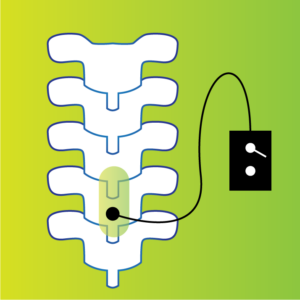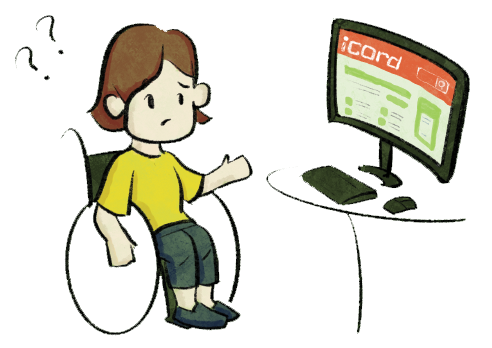


In this issue, read a recap of our Annual Research Meeting, find out about an act of generosity that will support future graduate students, and learn what two current (and one former) ICORD trainees are working on. Plus our regular features: Art Under the Microscope, Partner News, and more!
We hope you enjoy these feature stories:
- Annual Research Meeting recap
- Ronald McLeod Fellowship created
- Surgery for hip fracture prevention
- Advancing MRI technology for SCI
- Trainee profile: meet Isa Samad
- Primary care and SCI: medical education series recap
And these regular columns:
Annual Research Meeting recap
ICORD’s 21st Annual Research Meeting took place on March 6 and 7, with keynote talks by Drs. Veronica Tom (Drexel University) and Volodymyr Golyk (World Health Organization, Ukraine). Six ICORD PIs gave short talks about their research, and 60 posters were presented by trainees and staff.
In a message to participants included in the meeting program, Rick Hansen said, “Events such as this year’s Annual Research Meeting enable the international collaboration needed to advance innovative research and help set the bar higher towards world-class SCI care and cure. It’s an opportunity to reflect on how far we’ve come and how far we still need to go towards finding a cure for paralysis – one of the big dreams of the Man In Motion World Tour. Thanks to you, we are making strides every day towards this goal.”
We are grateful for the ongoing and generous support of the Rick Hansen Foundation to make events like our Annual Research Meeting possible.

Dr. Golyk presenting his keynote talk on March 7.
Ronald McLeod Fellowship in SCI Research created
A fellowship to support graduate students has been created thanks to a generous bequest by Ronald McLeod.
Ron was a proud Algonquin College graduate and retiree of Canada Post. He said being a mail carrier was the best job anyone could ask for because he got paid to be outside, exercise, and meet his neighbours. He was cherished by his customers, with whom he built lasting relationships. He was a fitness enthusiast who loved to walk and run, and hike when he visited his daughter, Joy, in North Vancouver.
Three years into his retirement, in 2015, he was hit by a distracted driver and acquired a high-level spinal cord injury. Joy moved back to Ottawa after the accident to live with her dad and help with his care.
Sadly, Ron faced many secondary health conditions over the years and he struggled to adapt to his new limitations, and his reduced independence. He made the choice to “die with dignity” (his words) in 2022.
Joy is now a PhD student at Carleton University. Her master’s thesis looked at peer support among individuals living with SCI. She remembers Ron as strong-minded, strong-willed, and a man with strength of character. He also had a very generous spirit—in life and death. He donated his body to science and the funds from his accident settlement to the Ottawa Hospital with the hope that he would help make a difference for others living with SCI. He also made a very generous bequest to ICORD in his will.
At ICORD’s Annual Research Meeting on March 6, Dr. John Kramer joined Joy in announcing that ICORD will use Ron’s donation to create the Ronald McLeod Fellowship for Spinal Cord Injury Research. The endowment is currently being created, and will fund a fellowship for a grad student with an SCI-focused project here at ICORD.

Surgery for hip fracture prevention
 By Jocelyn Chan
By Jocelyn Chan
Emily Bliven (pictured, right) is a fifth-year PhD student supervised by Dr. Peter Cripton in ICORD’s Orthopedic and Injury Biomechanics Group (OIBG). Her research focuses on injury biomechanics and injury prevention during falls. Originally from San Francisco, her background includes work at the Legacy Research Institute in Portland, Oregon, where she tested bicycle helmet technology designed to prevent concussions and other brain injuries. She also spent time at the Biomechanics Institute of the Murnau Trauma Hospital in Germany, studying the stability of various orthopaedic implants for fixing fractures, mostly in the hip.
Emily’s PhD work addresses the problem of hip fractures, which are projected to increase dramatically in the coming years with substantial costs and health consequences, by researching preventive (i.e. prophylactic) augmentation.
What is preventive augmentation? Emily explains preventive augmentation as “any surgical intervention to provide immediate mechanical strengthening to a vulnerable femur with the goal of preventing hip fracture in a high-risk candidate.” The femur, or thigh bone, is the longest and strongest bone in the body, connecting the hip to the knee.
Specifically, her work focuses on evaluating the efficacy of intramedullary (IM) nails in preventing hip fractures. “Our results suggest that prophylactic IM nailing may prevent hip fracture in a sideways fall impact when one would be otherwise predicted to occur without augmentation,” said Emily. However, she notes that while IM nails may prevent hip fractures in a fall, they might shift fractures to the pelvis, which are typically less severe injuries.
Emily’s scoping review identified bone cement injection as the most experimentally investigated method for preventive augmentation and that there are limitations in how sideways fall impacts are modeled in these studies. These findings highlight the need for testing augmentations with improved experimental models that accurately represent the dynamics of a fall.
Preventive augmentation is particularly relevant for people living with spinal cord injuries (SCI) who have higher rates of osteoporosis and fall risk. “Our research surrounding preventing hip fracture in a fall is relevant for people with SCI, especially those who ambulate,” she noted.
One innovative aspect of Emily’s PhD research involved incorporating a high-speed X-ray system into a fall. “With this addition, we were able to capture pelvis fracture in real-time in a realistic specimen for the very first time, and track relative bone-implant motion in 3D over the course of the fall impact! This tool can be used for studying injury in anyone that has orthopaedic hardware inside them, and also makes for really cool videos,” she said.

Fall simulator and X-ray machines pictured depicting specimen with IM nail
Emily’s overarching goal is to guide the design and development of new minimally invasive and surgically feasible prophylactic implants. “Once an implant with appropriate features is identified, we would evaluate it experimentally, similarly to how we tested prophylactic nailing,” she said.
Advancing MRI technology for SCI
By Jocelyn Chan
Magnetic resonance imaging (MRI) is a medical imaging technique that uses powerful magnets and radio waves to create detailed pictures of the inside of the body, including the brain and spinal cord. It helps doctors diagnose and monitor various conditions by providing clear images of tissues and organs. In spinal cord injuries, measuring myelin may help study tissue damage and repair processes.
Dr. Sarah Morris, a former ICORD trainee in the Laule lab, recently published a paper from her PhD work investigating new MRI techniques that aim to improve the characterization of SCI. Her study, conducted with the help of the International Spinal Cord Injury Biobank, investigates MRI sequences that provide detailed maps of tissue damage, which could be crucial for informing prognosis and guiding treatment for SCI patients.

“Traumatic SCIs are very heterogeneous, and having an MRI map of where different types of tissue damage are, and being able to track that over time, could really help inform prognosis and guide treatment for people after an SCI,” explained Dr. Morris. The study utilized histology staining as a gold standard to compare with potential MRI biomarkers, ensuring specificity and accuracy in the MRI scans.
Dr. Morris emphasized the practical applications of these validated MRI biomarkers. “After an SCI, patients receive an anatomical MRI to visualize the extent of the injury. We hope that after validation, research, and development, these new MRI biomarker scans can be brought into clinical use to provide maps of where the tissue is intact or damaged in specific ways to help the clinicians with prognosis and treatment of SCI,” she said.
The study employed various advanced MRI techniques, including myelin water imaging (MWI), inhomogeneous magnetization transfer (ihMT), and diffusion MRI methods such as diffusion tensor imaging (DTI) and diffusion kurtosis imaging (DKI). “Myelin is a sheath that wraps around nerve fibers in the spinal cord. It protects the nerve and speeds up the transmission of electrical signals, so myelin damage can seriously impact nerve function. Myelin water imaging measures the signal from the water trapped in layers of myelin to give a percentage of myelin in each pixel of the image,” Dr. Morris explained. “ihMT also measures myelin content, but using a completely different contrast mechanism focused on the lipids which make up the myelin layers. Diffusion MRI involves measuring the random movements of water molecules in tissue, providing information about the structure of both healthy and damaged tissue.”
One of the most challenging aspects of the study was coordinating a large team and managing extensive data. “The spinal cords underwent several hours of MRI scans at UBC, followed by processing and staining at ICORD,” Dr. Morris recounted. She also highlighted the technical challenges of handling large histology files: “We scan them at a high 40x resolution to see the shape of individual cells, and each file is very large.”
After completing her PhD at ICORD, Dr. Morris transitioned to a new role. “I have actually moved both research area and country! I am now one year into a Medical Physics residency program in Radiation Oncology at NYU Langone Health in NYC. I am training to perform clinical medical physicist duties, which center around making sure that the radiation therapy treatment we deliver is safe. I am also doing research into quantitative MRI techniques to measure cancer radiation treatment response,” she shared.
Interested in learning more? Dr. Morris made the winning video for a competition at a major international MRI conference (ISMRM), explaining the necessity for validating new MRI techniques using histology. Watch it here.
Trainee profile: meet Isa!
By Jocelyn Chan

Isa Samad is a first-year Masters of Science (MSc) trainee in Dr. Brett Hilton’s lab. Originally from Vancouver, Isa completed his BSc in Neuroscience at the University of California, Los Angeles. His curiosity to explore axon regeneration after spinal cord injury led him to join the Hilton Lab in September 2023 as part of UBC’s Neuroscience program.
Currently, there are no effective treatments to nerve regeneration in people who have sustained a spinal cord injury. Isa’s Masters project is focused on understanding how epigenetic modifications can augment the regeneration of axons – the portion of a nerve that carries nerve impulses – after spinal cord injury. Epigenetics refers to changes in gene activity that don’t involve changes to the DNA sequence itself. For example, even environmental factors can affect how our genes are expressed!
The Hilton lab has found that the activity of an enzyme, called Enhancer of zeste homolog 2 (Ezh2), is involved in axon regeneration. “We’ve found that inhibiting Ezh2 activity suppresses axon growth, while Ezh2 overexpression promotes axon growth. This project will further evaluate whether Ezh2 overexpression can enable axon regeneration following SCI,” explained Isa.
Isa won a poster prize for his very first poster presentation ever at ICORD’s Annual Research Meeting in March, as well as the prestigious CIHR Canada Graduate Scholarship (CGSM). Acknowledging his recent achievements, Isa commented on the importance of mentorship and collaboration in academic endeavors. “Definitely go for opportunities that you’re interested in, and don’t be afraid to ask for advice if you feel you need it. My supervisor and peers have been super helpful throughout this process, and I couldn’t have accomplished any of this without their help!” he said.

Isa is second from left in the front row of this photo of poster prize winners at the Annual Research Meeting
Outside of academia, Isa enjoys following the NBA playoffs and exploring languages. “I minored in Japanese during my undergrad and I’ve been learning other languages, like Korean, on and off whenever I have time. I think it’s super cool to learn about different cultures through language, and the joy and surprise on peoples’ faces when they realize you can speak their language is always worth the effort,” shared Isa. He is also involved in the Neuroscience Trainee Association at UBC (on Instagram as @ubcneurograd) and welcomes people to follow their page to be on the lookout for events.
Looking ahead, Isa shared his career aspirations: “I still haven’t thought that far ahead yet, but I am definitely interested in continuing to be involved in research with the hopes of helping people overcome neurological disease and injury.”
Primary care and SCI: medical education series recap
By Matthew Querée
The SCIRE team, in collaboration with top GF Strong physiatrists, the UBC Department of Family Medicine, and SCI-BC, with funding from Health Research BC, recently delivered a series of accredited Medical Education lectures entitled Primary Care and SCI: What Doctors Need to Know.
Over 100 healthcare professionals attended the Primary Care and SCI lecture series, including family doctors and nurse practitioners. Highlights of the lecture series include:
- Dr. Andrea Townson presented on Cardiovascular Health and SCI, emphasizing certain risks of cardiovascular disease, such as obesity, caloric surplus, and inactivity, which may be higher in people living with SCI.
- In Dr. Rhonda Willms’ lecture on Skin Health and SCI, she focused on increasing awareness of how easily pressure injuries can develop, how skin injuries are often indicators of other health problems, and how patients and caregivers can use their phones to take pictures of potential skin issues to improve screening for future problems.
- Dr. Andrei Krassioukov presented on Blood Pressure and SCI. Family doctors need to know their patients’ baseline blood pressure (hint: it might be lower than you think!), to understand that people with injuries above T6 are more at risk for dangerous spikes and drops in blood pressure, and how to resolve acute episodes of Autonomic Dysreflexia or Orthostatic Hypotension.
 In her lecture on Bladder Care and SCI, Dr. Viet Vu (pictured, right, with Matthew Queree) emphasized that family doctors should know and ask about their SCI patients’ methods of bladder emptying, why primary care practitioners should be suspicious of UTIs, and why family doctors should refer their patients to a urologist annually. The fantastic physiatrists at GF Strong Rehabilitation Centre were pleased with the series and the turnout. “I was really excited to see so many doctors attending these sessions who I have sent patients to,” said Dr. Rhonda Willms. “Thank you for your dedication, and we are here for you too.”
In her lecture on Bladder Care and SCI, Dr. Viet Vu (pictured, right, with Matthew Queree) emphasized that family doctors should know and ask about their SCI patients’ methods of bladder emptying, why primary care practitioners should be suspicious of UTIs, and why family doctors should refer their patients to a urologist annually. The fantastic physiatrists at GF Strong Rehabilitation Centre were pleased with the series and the turnout. “I was really excited to see so many doctors attending these sessions who I have sent patients to,” said Dr. Rhonda Willms. “Thank you for your dedication, and we are here for you too.”
Multiple people with SCI were involved in the development of the Primary Care and SCI lectures and participated in the scientific panel for this project. Dr. Chris McBride, Executive Director of SCI-BC and panel member, commented, “I have been engaged in a number of networks focused on improving care for people with disabilities…filling this knowledge gap is a key component in improving health services moving forward.”
The team at Pathways BC, a primary care referral directory for doctors and their teams, also concurs with the content presented. Their Provincial Resource Committee met recently, and the SCIRE Primary Care content has been included as a clinician tool in their Resource Centre.
Interested in learning about the topics covered? The information presented in this series is on the SCIRE Project website’s special section on Primary Care and SCI. The lectures were also filmed. Subscribe to the SCIRE YouTube channel to stay tuned for videos to be published in June! Later in 2024, SCIRE also plans to add new sections, including resources on Respiratory Health and Pain Management.
SCIRE invites you to check back often on their platforms and to spread the word!
Art under the microscope
By Oscar Seira
This is an image capturing the corticospinal tract at the level of the midbrain’s pyramids (i.e. structures in the middle part of the brain). The red and green lines represent nerve pathways from the brain’s motor cortex. This fluorescent labeling offers a clear visualization of neural pathways, aiding researchers in understanding how signals from the brain control movement. Such imaging provides valuable insights into the intricate workings of the nervous system.

Our ICORD-O Lab Trainees recently participated in ICORD’s Annual Research Meeting (ARM), presenting three posters and engaging in some team-building activities.

 In addition, our ICORD Partnership Training Development team has launched. We had our first partnership meeting in Vancouver on March 6 and have launched our co-planning and co-creating of the training course. If you would like more information about this, please contact Alanna Shwed.
In addition, our ICORD Partnership Training Development team has launched. We had our first partnership meeting in Vancouver on March 6 and have launched our co-planning and co-creating of the training course. If you would like more information about this, please contact Alanna Shwed.
Help us do research
Interested in helping ICORD researchers make SCI preventable, livable, and curable? These research studies (and more) are in need of participants!
Recreational adaptive devices (RAD) study
![]() Researchers at UBC have partnered with RAD Society with the aim of designing outdoor programs to encourage outdoor recreational activity for individuals with mobility impairments. The purpose of this study is to understand the needs, interests, and challenges of individuals Read More…
Researchers at UBC have partnered with RAD Society with the aim of designing outdoor programs to encourage outdoor recreational activity for individuals with mobility impairments. The purpose of this study is to understand the needs, interests, and challenges of individuals Read More…
Sleep routines and sleep disturbances after SCI
 ICORD researcher Dr. Claydon, her research team at SFU, and community partner Spinal Cord Injury BC are interested in learning more about the sleep routines, disturbances, and barriers to sleep supports experienced by individuals with spinal cord injury (SCI). Read More…
ICORD researcher Dr. Claydon, her research team at SFU, and community partner Spinal Cord Injury BC are interested in learning more about the sleep routines, disturbances, and barriers to sleep supports experienced by individuals with spinal cord injury (SCI). Read More…
Push until it hurts: The impact of acute exercise on muscle-level pressure pain
![]() Researchers in Dr. Kramer’s lab are interested in better understanding how exercise impacts our pain experience. We are looking for people to attend one day of testing, which includes pressure pain measurements before and after a bout of high-intensity cycling. Read More…
Researchers in Dr. Kramer’s lab are interested in better understanding how exercise impacts our pain experience. We are looking for people to attend one day of testing, which includes pressure pain measurements before and after a bout of high-intensity cycling. Read More…
Integrating patient-centered outcomes in rehabilitation and community SCI care
![]() Patient-centered spinal cord injury care considers the needs, preferences, and values of patients. Completing self-assessment questionnaires at specific time points in treatment can help clinical teams better understand how individuals with a spinal cord injury feel and can function. Read More…
Patient-centered spinal cord injury care considers the needs, preferences, and values of patients. Completing self-assessment questionnaires at specific time points in treatment can help clinical teams better understand how individuals with a spinal cord injury feel and can function. Read More…
Neuromodulation for bladder function (SCONE clinical study)
 Researchers in Dr. Andrei Krassioukov’s lab are trying to understand how neurogenic lower urinary tract dysfunction (loss of bladder control) can be recovered after brain or spinal cord damage due to spinal cord injury, multiple sclerosis or stroke. See story above or visit the study page.
Researchers in Dr. Andrei Krassioukov’s lab are trying to understand how neurogenic lower urinary tract dysfunction (loss of bladder control) can be recovered after brain or spinal cord damage due to spinal cord injury, multiple sclerosis or stroke. See story above or visit the study page.
Click here to browse all the ICORD studies currently recruiting participants.
Interested in participating in ICORD research but feeling overwhelmed by the number of studies?
Our Study Liaison is here to help!
 Interested in participating in ICORD research but feeling overwhelmed by the number of studies? Our study liaisons will help you out! They will work closely with you to narrow down what studies you may be eligible for, by asking questions about your research interests as well as common study inclusion and exclusion criteria. From there they will tailor a list of research studies for you and provide details and contact information for each one. They can also directly connect you with study coordinators if you like. Send them an email to begin your consultation!
Interested in participating in ICORD research but feeling overwhelmed by the number of studies? Our study liaisons will help you out! They will work closely with you to narrow down what studies you may be eligible for, by asking questions about your research interests as well as common study inclusion and exclusion criteria. From there they will tailor a list of research studies for you and provide details and contact information for each one. They can also directly connect you with study coordinators if you like. Send them an email to begin your consultation!
Our current study liaison, Adam Doelman, will be leaving ICORD this summer. We are very grateful for the amazing work he did over the past year! He will be missed, but has promised to train our new liaisons (who will be introduced in the Summer ICORDian) before he leaves.
Partner news

Read The Spin!
SCI BC’s Spring 2024 issue of The Spin includes articles on caregiving, accessible camping, a wound care treatment called Amicapsil and more!

Granzymes and autoimmune diseases
Check out this interesting article featuring ICORD Principal Investigator Dr. David Granville’s research on granzymes in the context of autoimmune and age-related diseases. Granzymes, enzymes released by immune cells, have been identified as key players in immune responses and tissue damage. Dr. Granville’s research investigates the mechanisms through which granzymes contribute to diseases like rheumatoid arthritis, lupus, and Alzheimer’s. By studying these pathways, his team aims to develop novel therapeutic strategies for treating these autoimmune conditions.
Highlighting Participant Stories
VCHRI is pleased to announce the launch of a new initiative showcasing participant stories. These narratives offer personal insights into the diverse motivations behind individuals’ engagement in research studies. By sharing these stories, VCHRI aims to humanize the scientific process and highlight the invaluable contributions of research participants to advancing healthcare knowledge and innovation. Explore these inspiring accounts at VCHRI Participant Stories.
National AccessAbility Week kicks off May 26
National AccessAbility Week was originally inspired by Rick Hansen’s Man In Motion World Tour to celebrate Canadians with disabilities. Join the Rick Hansen Foundation in celebrating National AccessAbility Week with our exciting slate of activities:
- Join the #NAAWChallenge and recognize someone with a disability making an impact.
- Join our free webinars to learn about accessibility and inclusion.
- Connect with us on social to be a part of the conversation all week long.
To learn more about National AccessAbility Week visit RickHansen.com/NAAW.
 Thanks for reading this issue of The ICORDian – we hope you enjoyed it! Please subscribe and have future issues delivered to your inbox. If you have any comments about this issue or suggestions for future ones, please contact us.
Thanks for reading this issue of The ICORDian – we hope you enjoyed it! Please subscribe and have future issues delivered to your inbox. If you have any comments about this issue or suggestions for future ones, please contact us.
|
Jocelyn Chan, Emily Bliven, Isa Samad, Sarah Morris, Christina Skinner, Oscar Seira, Matthew Querée, Katie Ashwell, and Cheryl Niamath for their contributions to this issue of our newsletter.
|




